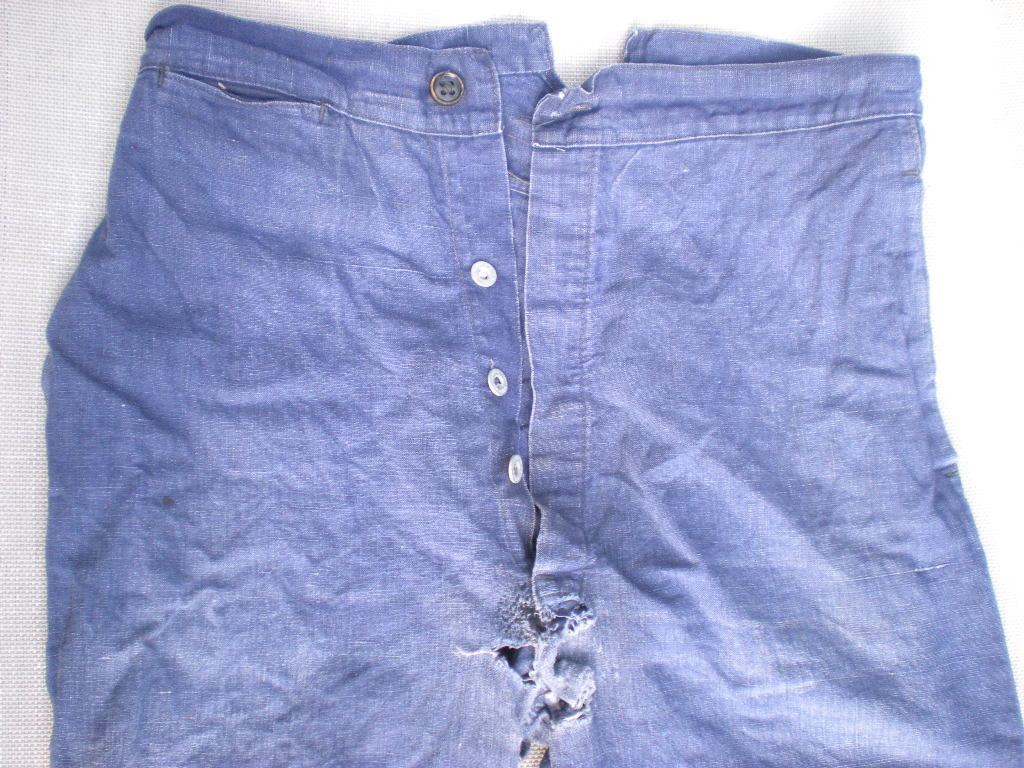Trousers
Note: All images used without permission. Original sources are cited at bottom of page.
With perhaps the exception of the kepi, no other piece of French uniform was as iconic of the French army of 1914 than the red trousers of the infantry. Nor would few articles better reflect the change the army would undergo during the war. Along with headwear and the greatcoat, the trousers would go through a variety of transition starting as early as the fall of 1914.
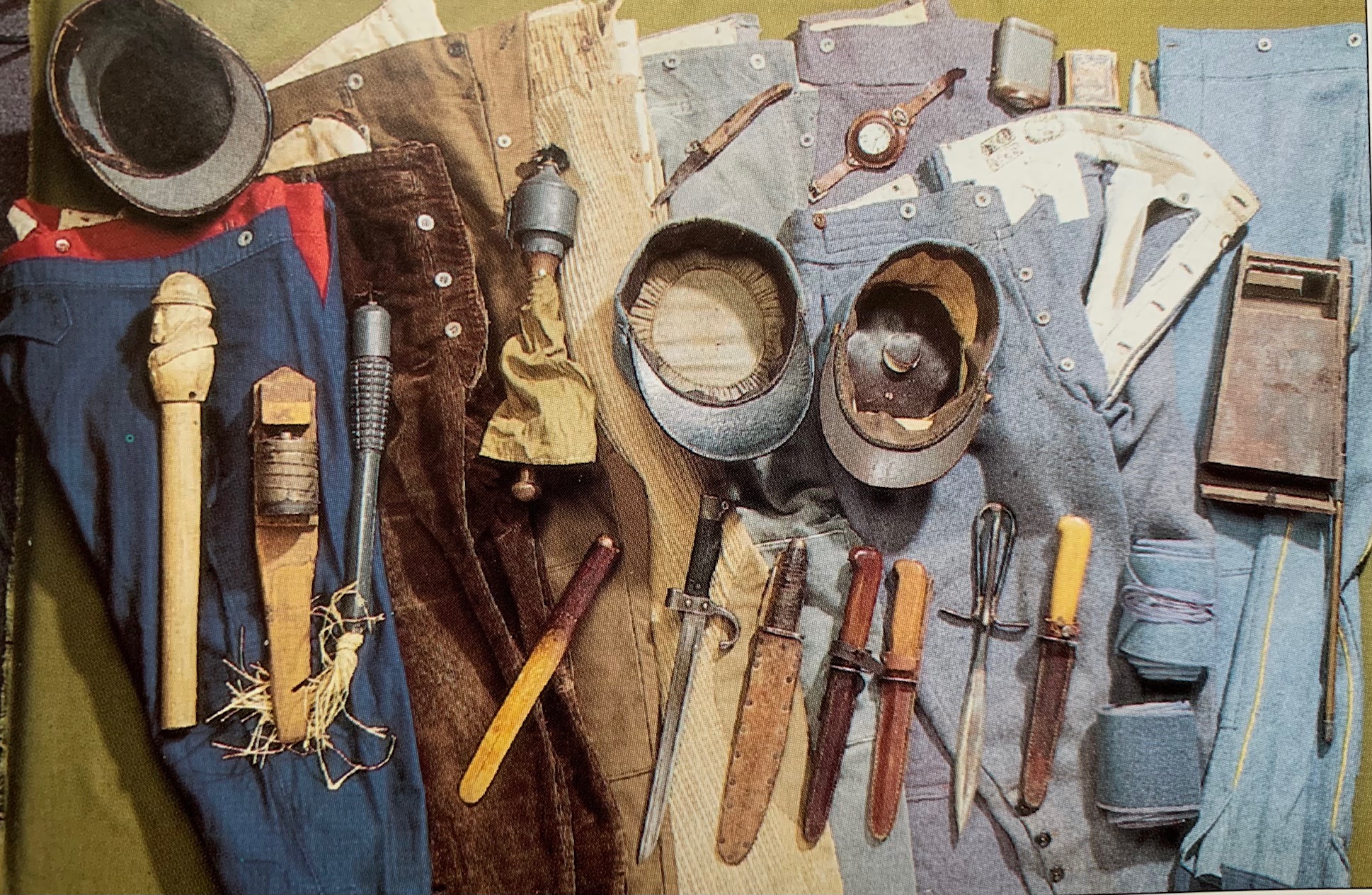
A collection of French army pants. From left to right: madder red trousers covered by a pair of blue canvas mechanic overalls, corduroy trousers in dark brown, ratiné velvet trousers in light brown, private purchase corduroys in beige, corduroys in light blue, foreign-sourced indigo blue trousers, and horizon-blue breeches.
The pantalons garance, or madder red trousers in wool, were adopted by the French army as early as 1829, with only small modifications made over its 75 years of use. In 1914, they were still referred to as >i>garance trousers but this qualifier designated only the shade of red. For since the end of the 19th century, the original plant dye used in their production had been replaced by a chemical composition (Alizarin) that was made in Germany. In 1867, two vertical sewn-in side pockets were added, a right waist gusset pocket, as well as a martingale to the rear waist. In 1893, they were slightly modified again with the addition of nickel-plated steel pronged buckle. Two final changes were made in 1897 with the suppression of the interior pocket flaps and the addition of a linen band to the inside bottom hem of the legs (60 mm high) in order to protect against wearing caused by the gaiters. The fly was closed with four buttons in zinc stamped "Equipement Militaire," together with a black lacquered iron hook, and included a French carrier that button closed. There were also a pair of suspender buttons on each side of the front waist and another pair in the rear. All button holes were handsewn. The trousers are lined along the interior waist, fly and crotch with undyed white cotton.
The first days of maneuvering and combat showed the highly conspicuous trousers for the true danger they posed to the wearer. The immediate response by the troops was to simply unbutton the skirts of the greatcoat to help reduce visibility.
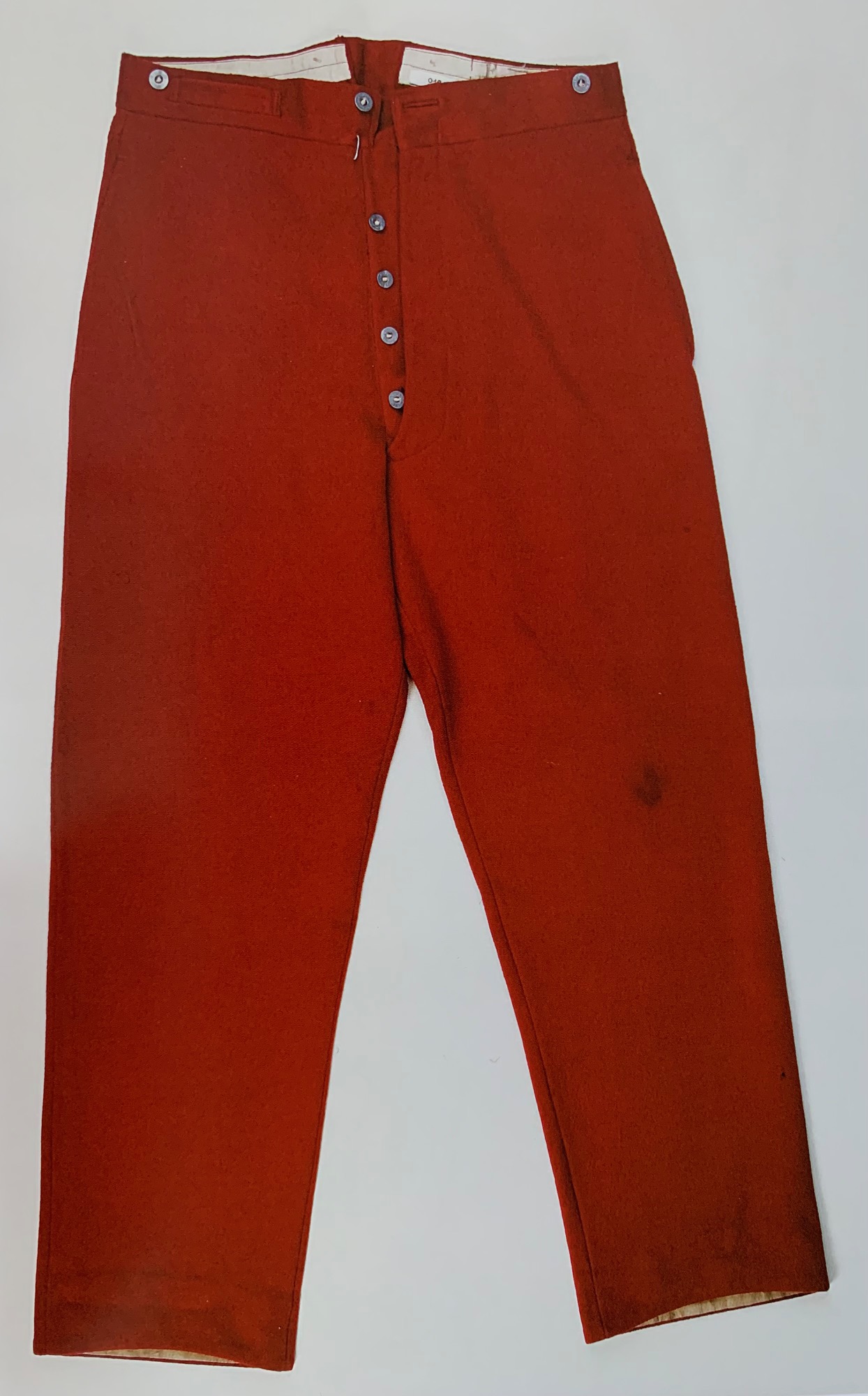

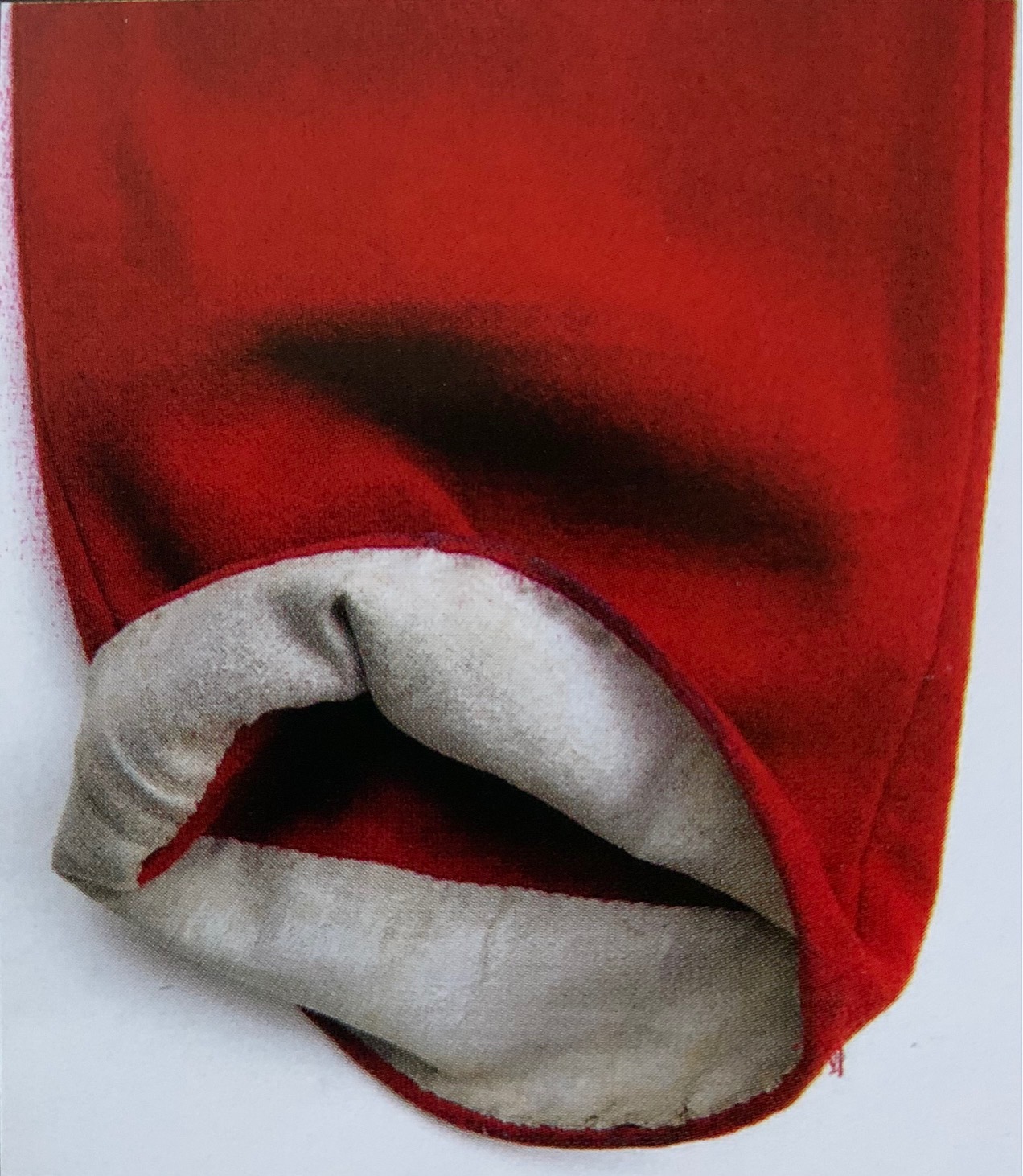

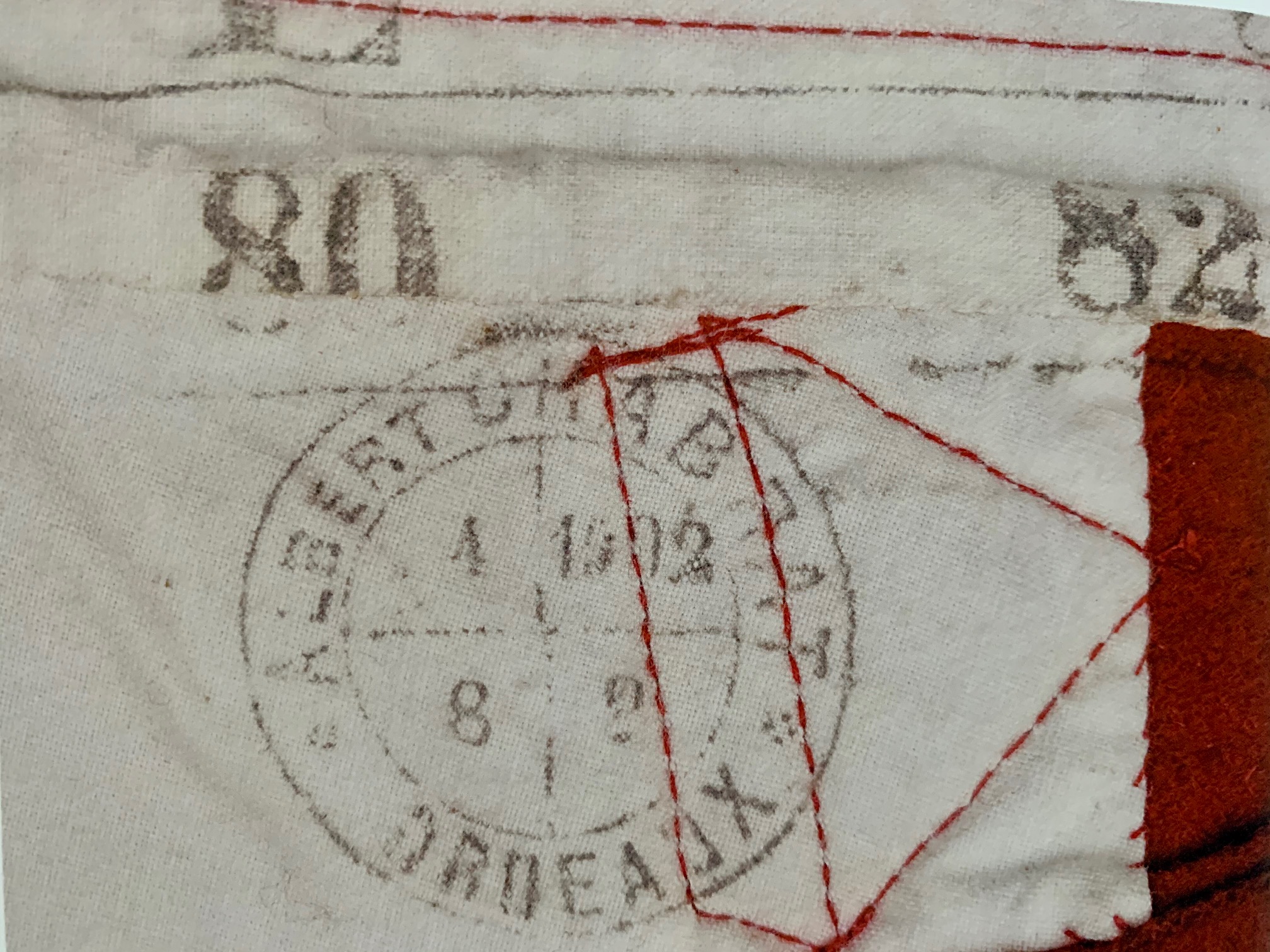
The stamps on the liner of this example indicate the trousers were issued to the 107e [Régiment d'Infanterie] de Ligne. The inspection stamp on the fly lining is dated 27 November 1902. The small round one next to it is the inspector's stamp which marks the army corps region of the inspector and the inspector's initial. The large round manufacturer's stamp is dated 4 (i.e., April) 1902, with the receiving commission's serial number (8, 2) below the date. Above this is the size stamp.
On 12 October 1914, the Minister of War made an immediate request to make a trial set of 10,000 salopettes en toile bleu ("blue canvas overalls") intended to reduce the visibility of infantry troops and the wear and tear of all trousers while also increasing the protection against cold. Expedited initially to the 1st Army, it was immediately approved for distribution to all infantrymen wearing madder red trousers. A certain latitude was given to the regional quartermasters, which were provided with the instructions: "mechanic work pants in blue cotton canvas a little overly wide in order to account for shrinkage after washing. Replace the pockets with simple vertical vents providing access to the trouser pockets underneath. Find all appreciable stocks of pants made in canvas." It should be noted that while some original examples followed the official prescription of creating simple vent side-seam pockets, others came provided with sewn-in pocket liners. Similarly, some feature an interior waistband liner while others do not. In addition to manufacturing the salopettes, stocks were purchased from civilian manufacturers fit for the purpose.
Shortages in the number mechanics pants available necessitated other expediencies as well. A decision on 24 October 1914 provided some replacement troops with Model 1867 trousers in blue cloth. Other troops received dark blue trousers instead of blue canvas coveralls to replace their madder red trousers instead of covering over them. These dark blue trousers came by the most part from the local companies of firemen, requisitioned by the decision of 31 October 1914. These were in shades of dark iron gray and featured a scarlet pinstripe running down the outside leg seam.
Ironically, it was in January 1915 when the determination was made by French command that the blue canvas overalls could be retained in the summer of that year and worn on their own as a lightweight alternative in hot weather. As a result, in March production is started back up and continued until August for what would be the final distribution of canvas trousers for that summer.
On 11 November 1914, French command calls for a new regulation issue pants to be designed, which will have to be breeches since the leg wraps had officially been announced as the replacement for the infantry leather gaiters on 24 October. The description of the pantalon-culotte was released on 9 December. The upper portion was the same as the old 1867/93 pants, with vertical sewn-in side pockets and waist gusset pocket, martingale with nickel-plated or black lacquered steel pronged buckle, four button closure and black lacquered iron hook with French carrier, and two pair of front suspender buttons with one rear pair. Theoretically, "Equipement Militaire" buttons in zinc were attached, though plain buttons in tin were also used. All button holes were handsewn. The trousers are lined along the interior waist, fly and crotch with undyed white cotton.
The change was in the bottom half, which narrowed below the knee, ending mid-calf, and tightened with a lateral slit and cloth ribbons (about 40 cm long). Later in the war, the tightening ribbons were replaced with a narrow blue cotton cuffs. And so the old trousers had been replaced with a form of breeches. The knees were to be reinforced with an extra layer of cloth. Some patterns utilized button closures instead of the simpler lace closers. In addition, certain manufacturers, especially with the early runs of the breeches, did not include the knee patch reinforcements. Like the model 1867/93, the breeches were lined on the waist and fly with plain white cotton. Liners made in pinstriped cotton were also made.
While a new uniform cloth was already in production prior to the change over to breeches, it would not be until 25 November when the new regulation uniform cloth -- referred to officially as bleu clair ("light blue") and later modified to bleu horizon (see The Horizon-Blue Cloth page for more information). While the first productions of the M1914 breeches were made in light blue, there was no rule stipulating that other shades of blue or even other neutral colors could not be used.
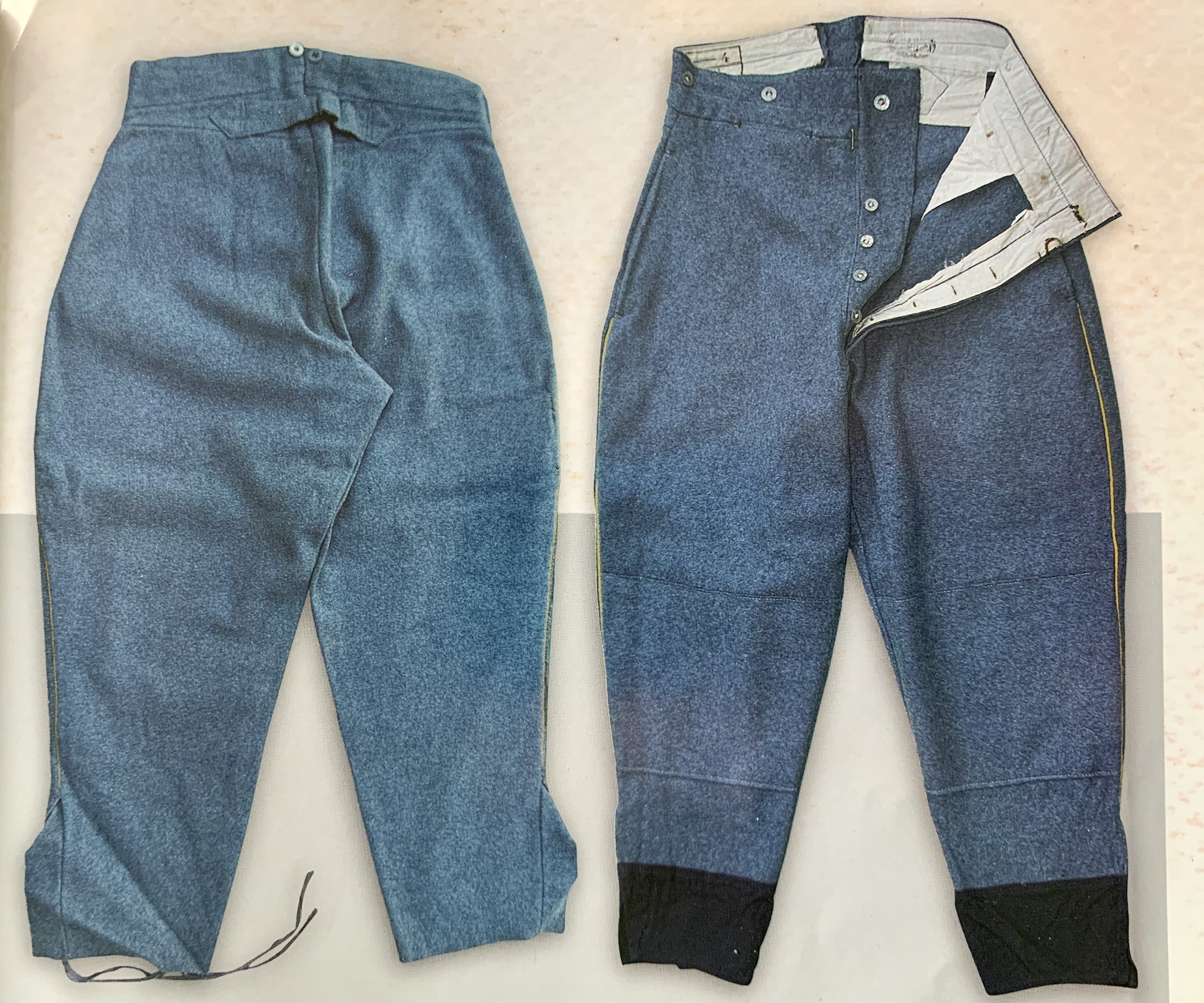
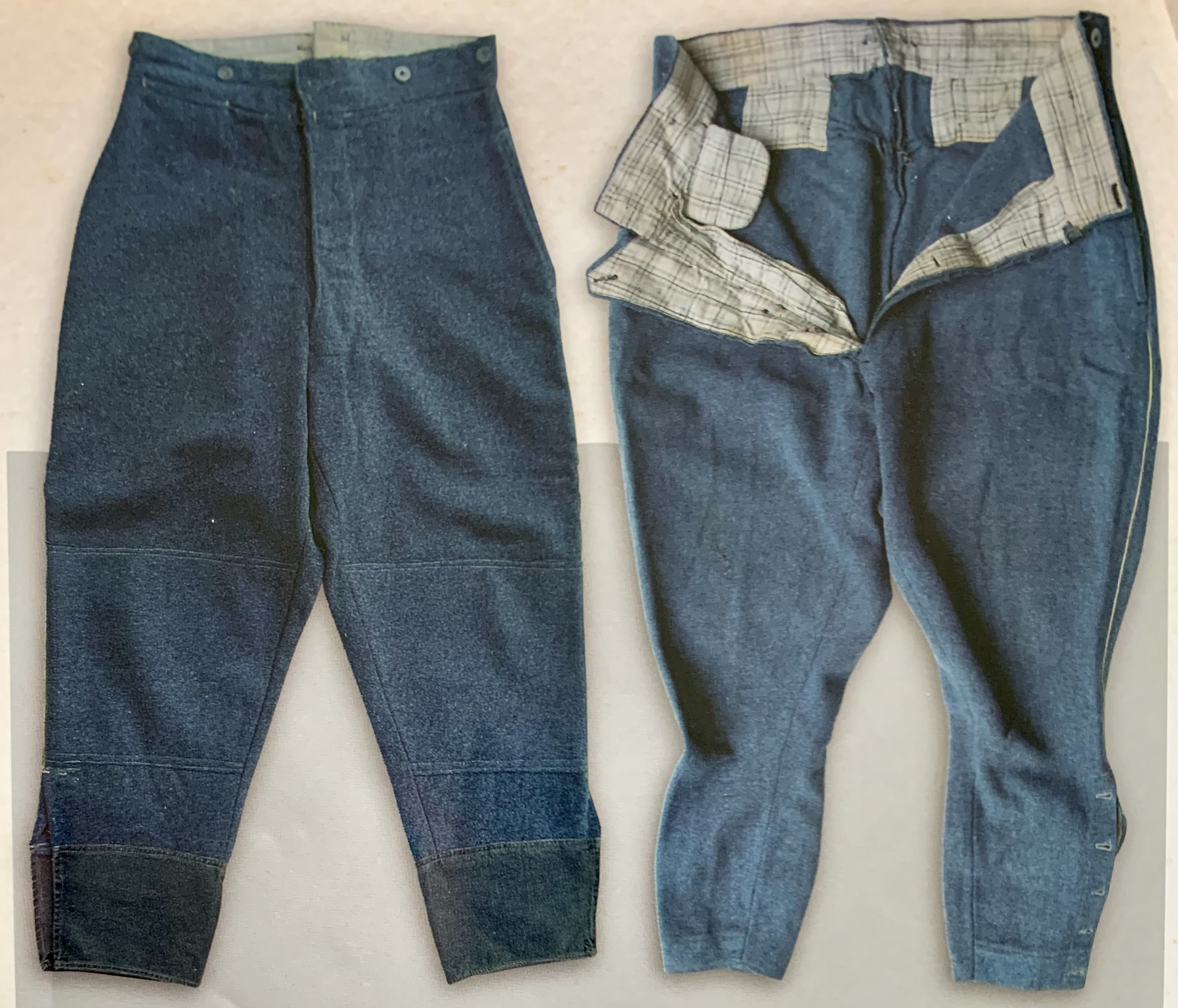
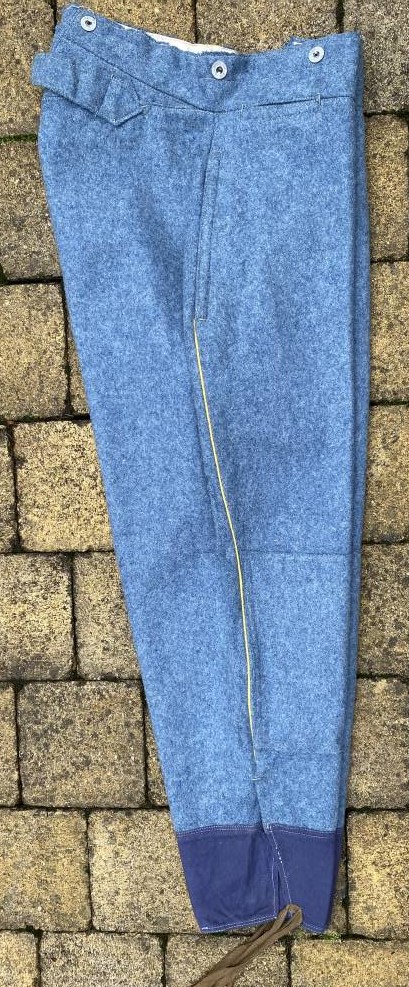

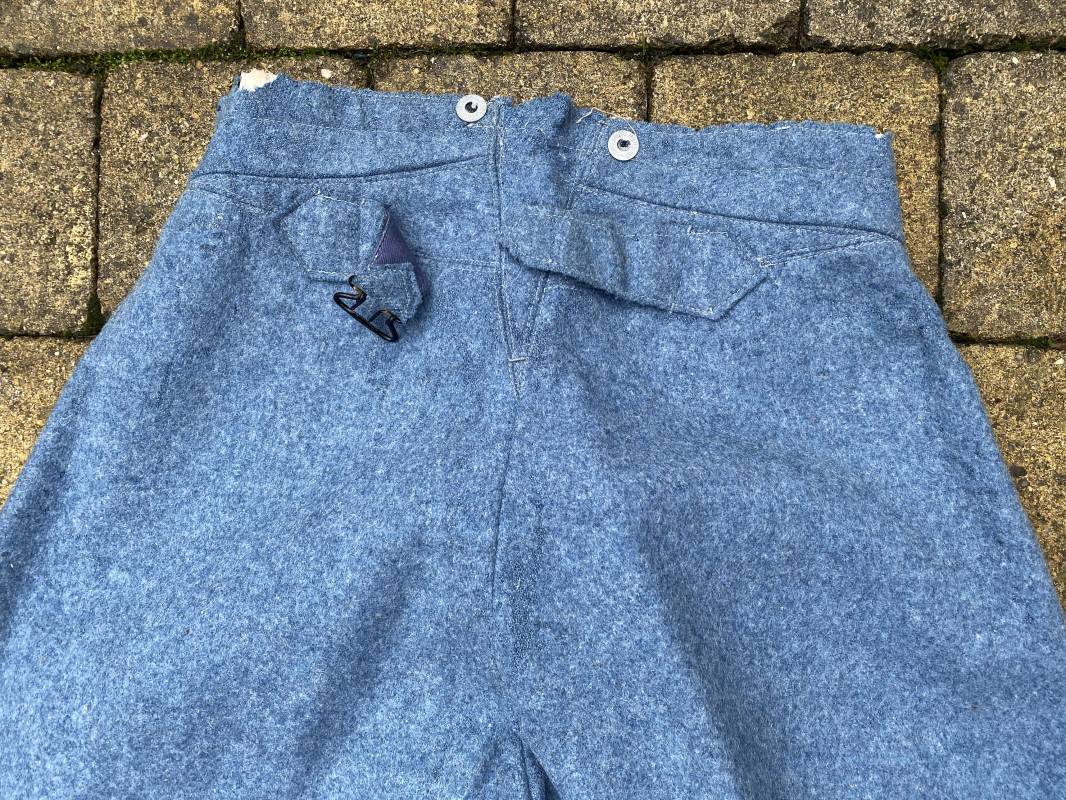
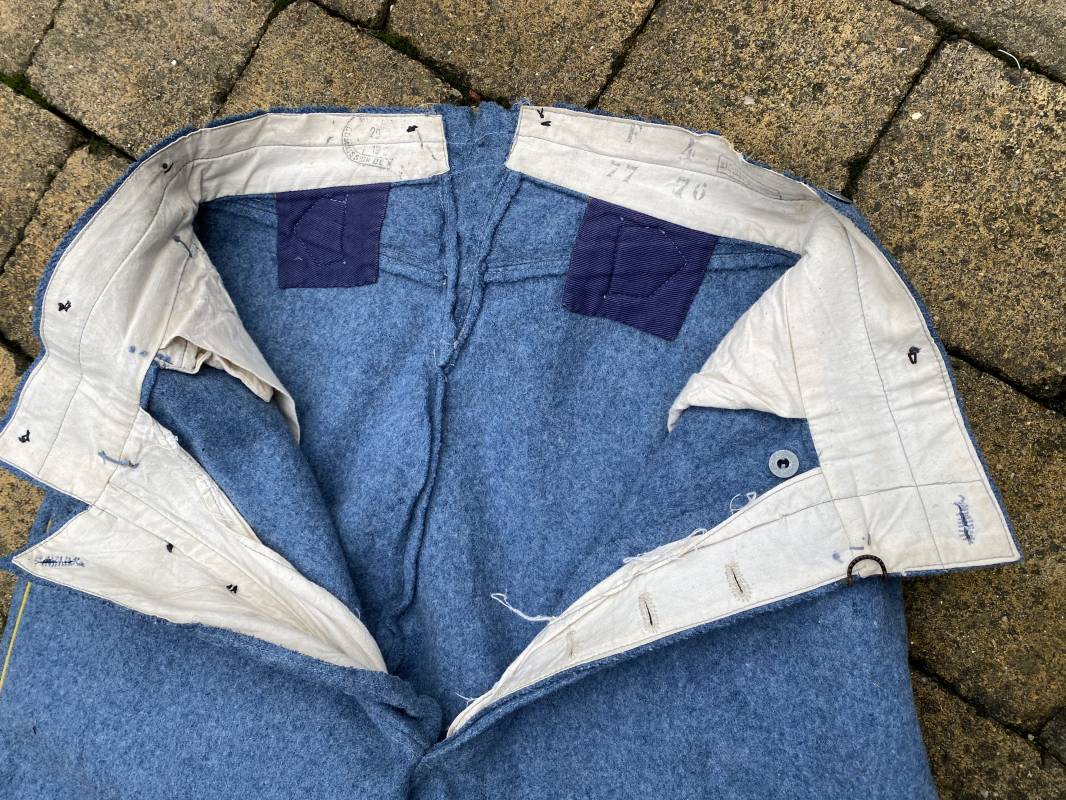
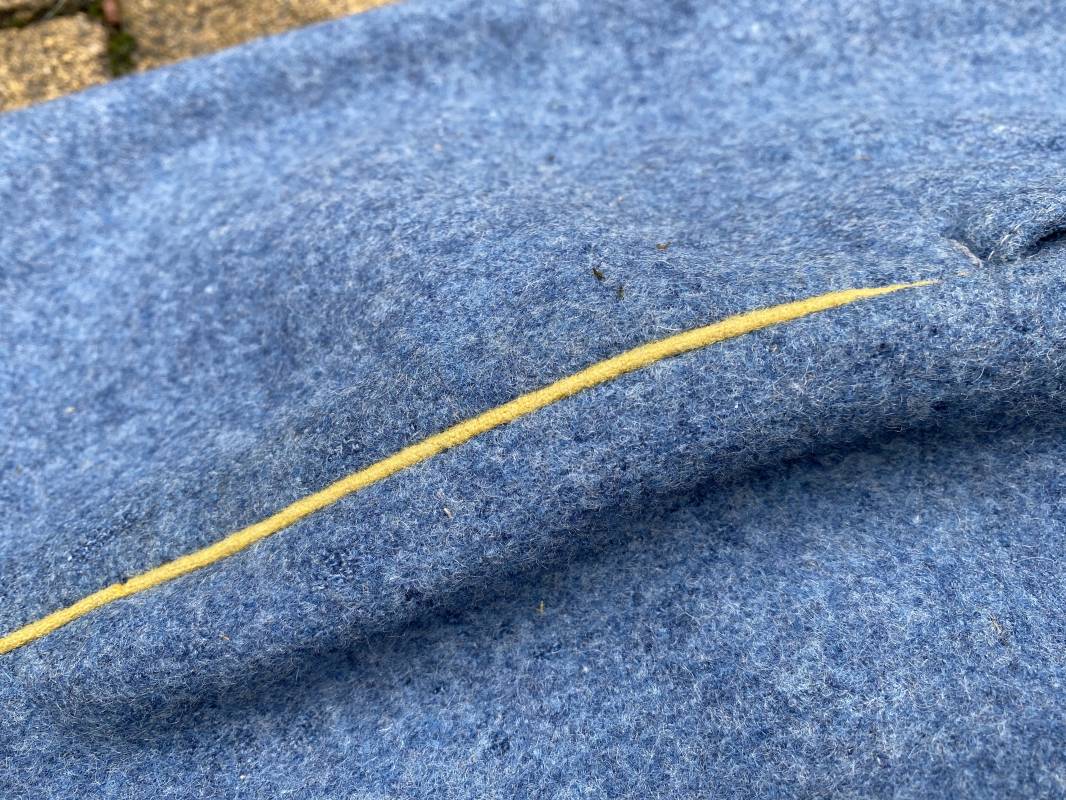
Five examples of the M1914 breeches in regulation horizon-blue wool.
Even in January 1915, both the regulation bleu clair cloth or any other cloth was permitted for use in the production of the Model 1914 breeches. This led to a variety of wool, cotton, velours (satin), and velours côtelé (corduroy) cloth being used in varying shades of blue, brown and beige. By the end of February, 770,000 pants and breeches in satin or civilian cloths had been distributed with an additional 430,000 in stock. Adding to the confusion, certain units took their own initiative and purchased civilian corduroy culottes or trousers. It wasn’t until April 1915 that it was required that breeches made in satin use a color similar to the regulation uniform cloth in addition to horizon-blue.
Because the breeches made in non-regulation uniform cloths (a similar issue was faced with the jackets), there was an alarming number of captured French troops who the Germans claimed to be out of uniform and accused of being spies. This resulted in a number of POWs being summarily executed for espionage. To lend a more military appearance to the breeches, on 21 April a ministerial decision was issued stipulating that a cloth piping in jonquille (daffodil) yellow for infantry be added (the piping was scarlet for artillery, blue for cavalry, black for engineers). This consisted of a narrow band of wool cloth pinched between the outer leg seams during construction. At the same time, breeches already produced or distributed were to be recollected so the piping could be added. As it was unrealistic, especially at the front, to take make this modification by taking apart the outer seams, a simple yellow braid was often sewn on instead.
Starting in the spring of 1915 a greater degree of standardization is achieved. By March, monthly production had reached 1.3 million breeches. In the fall of 1915, it is mandated that only wool cloth made in light blue or velours lisse (smooth velvet) or corduroy velvet in the same shade is authorized for use in the production of breeches. With use, the smooth velvet (also known as “ratine”) proves to be too delicate. Before it is suppressed, it’s decreed in spring 1916 that breeches made in this light cloth can be retained for distribution in the warm weather months. Even with this limited use, these breeches hardly last more than a season in the trenches. Until the end of the war, corduroy breeches in shades of horizon-blue or light blue will remain authorized for the production of breeches.
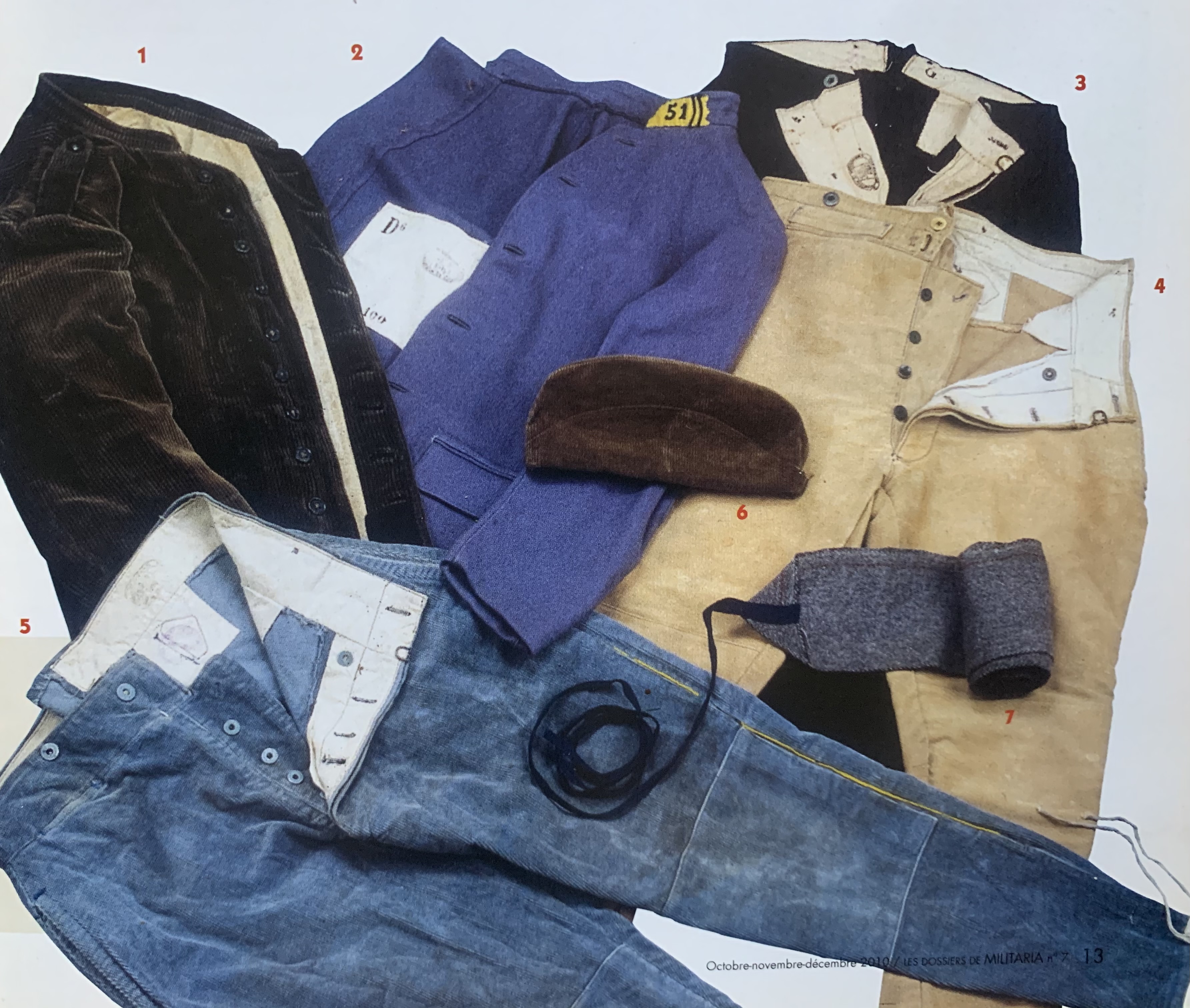
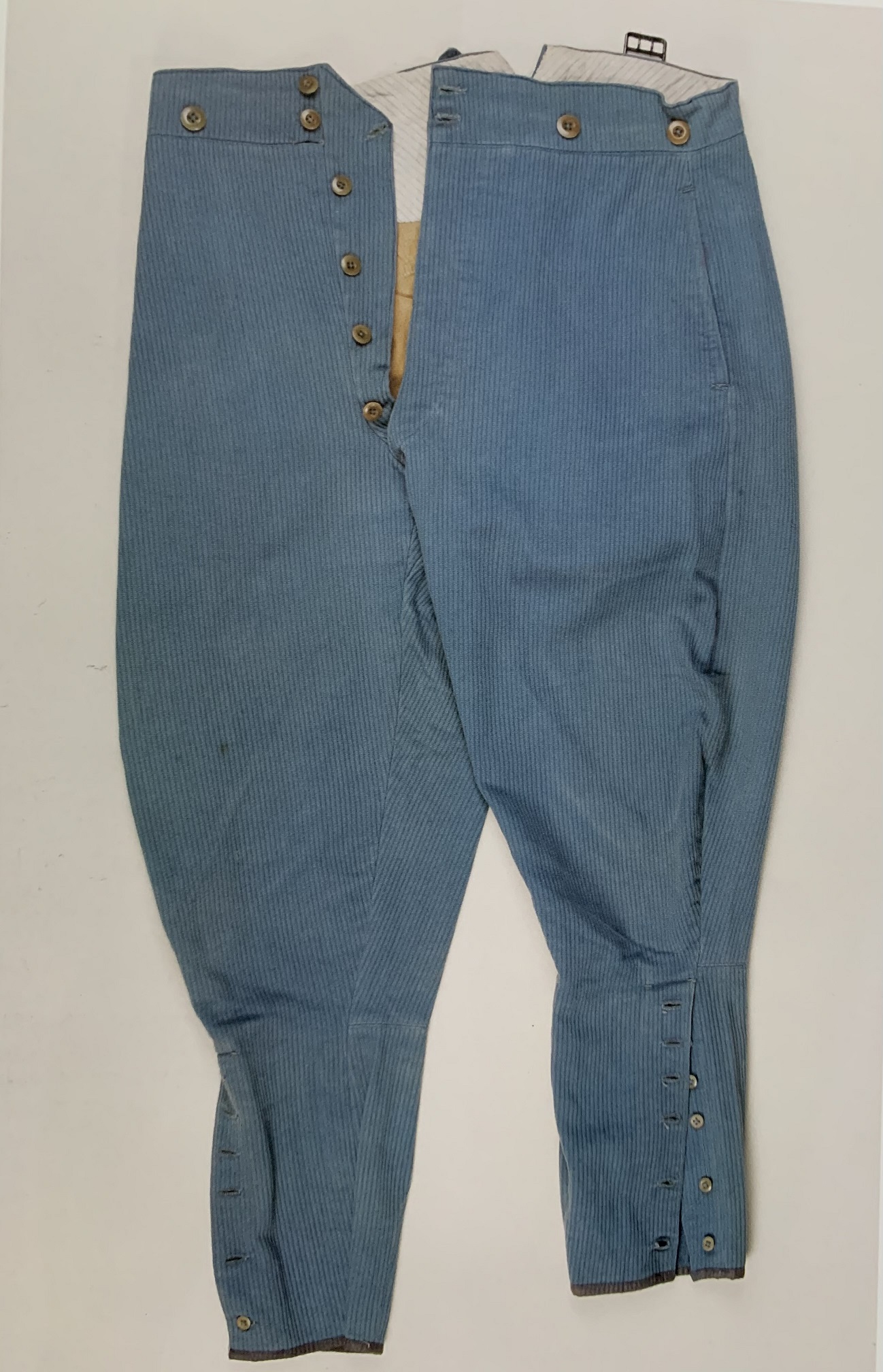
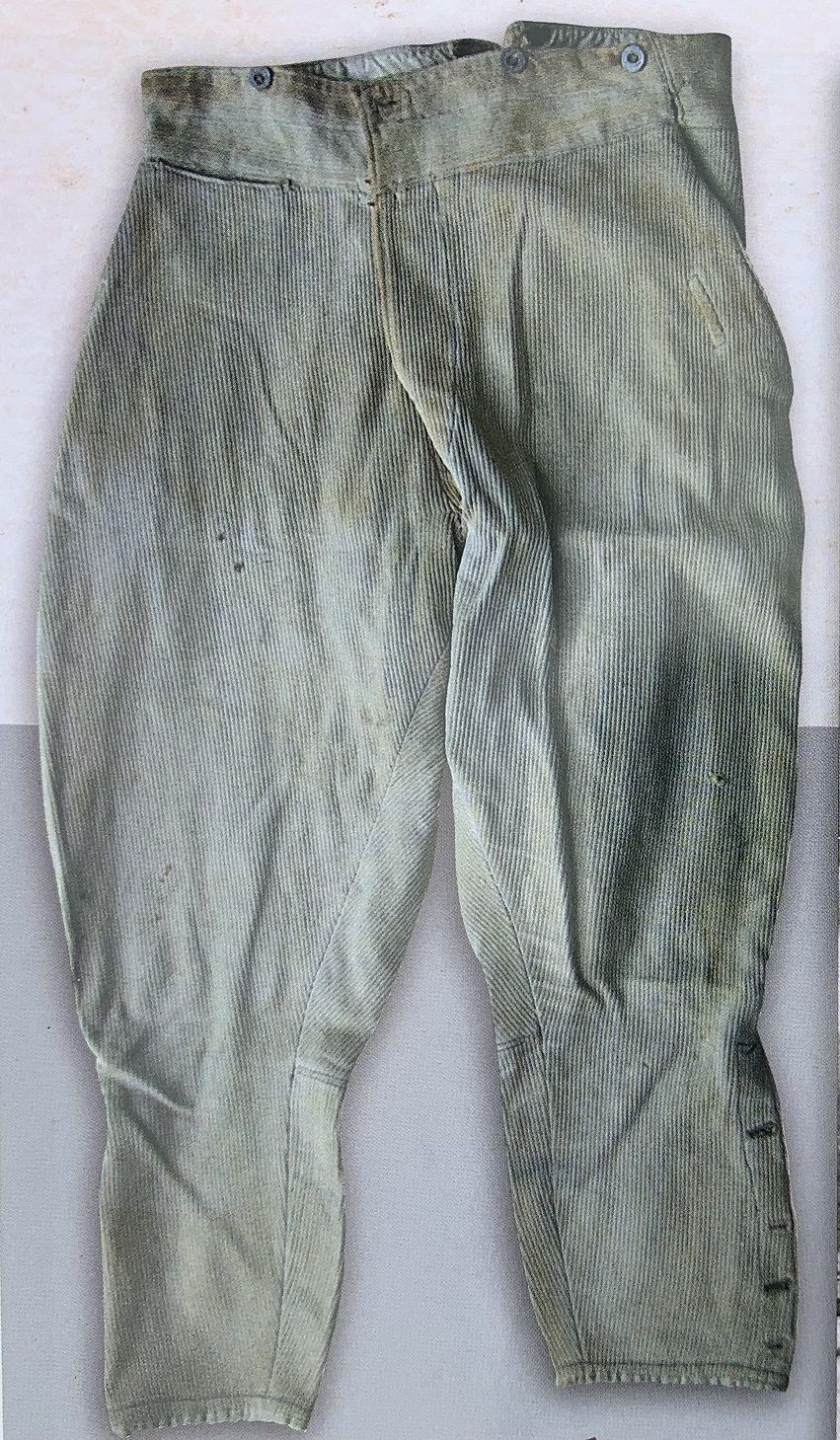
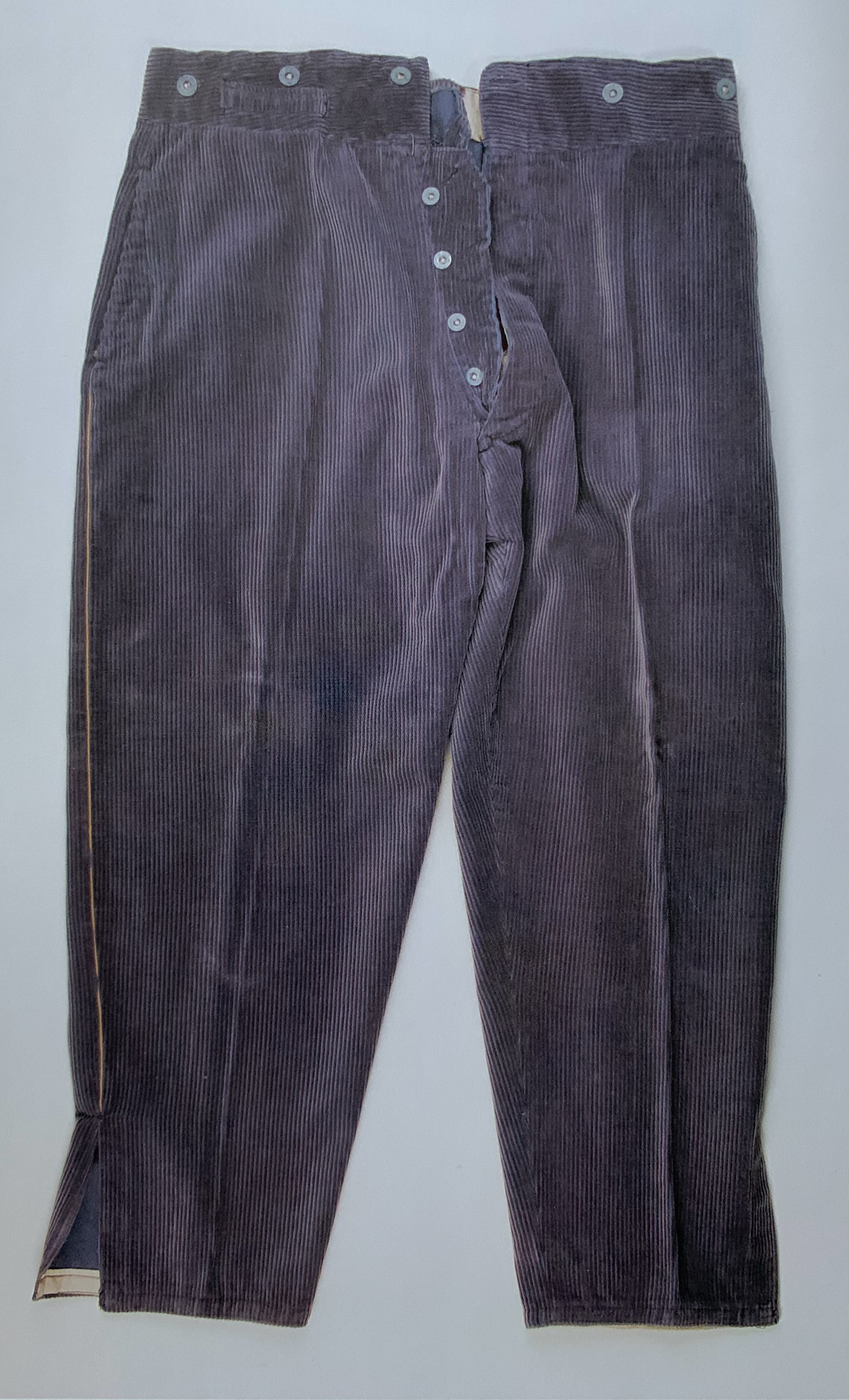
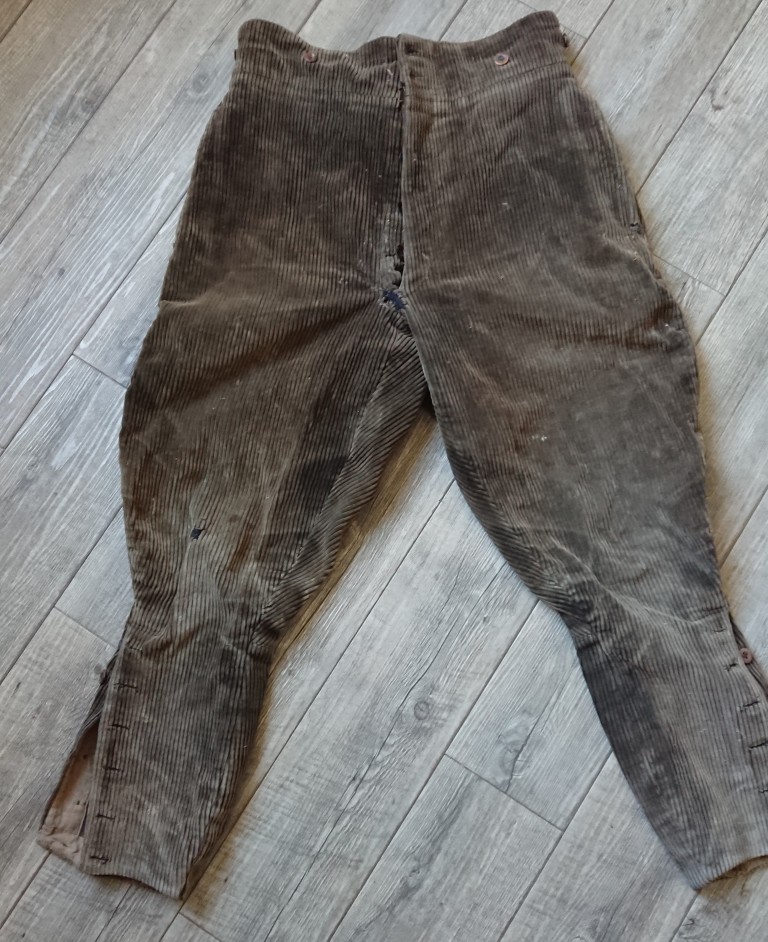
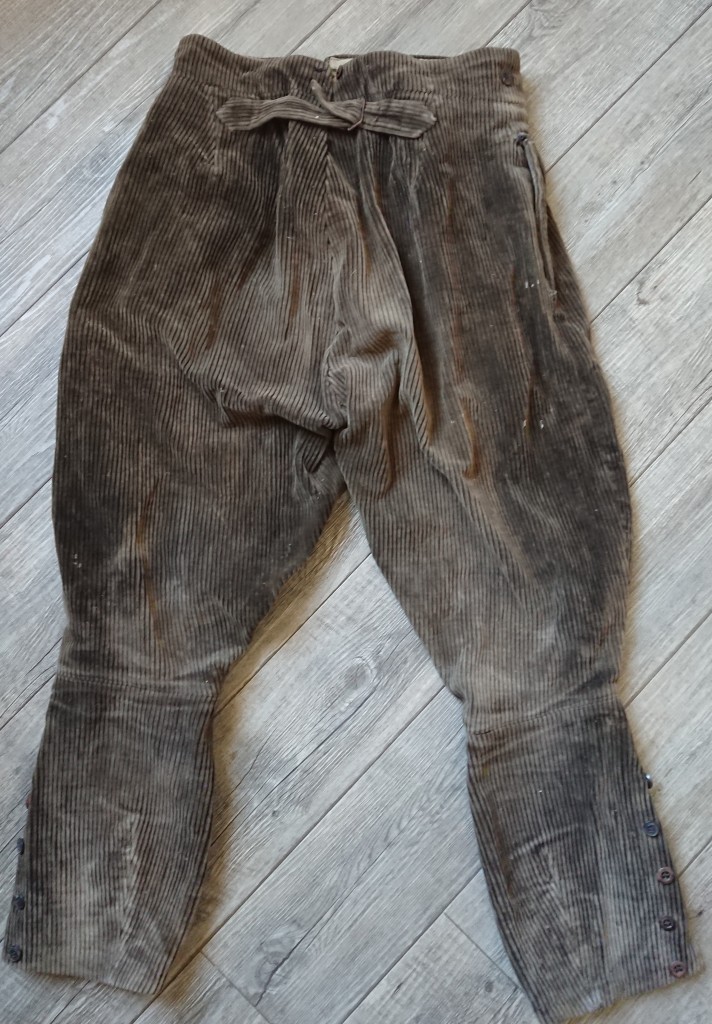

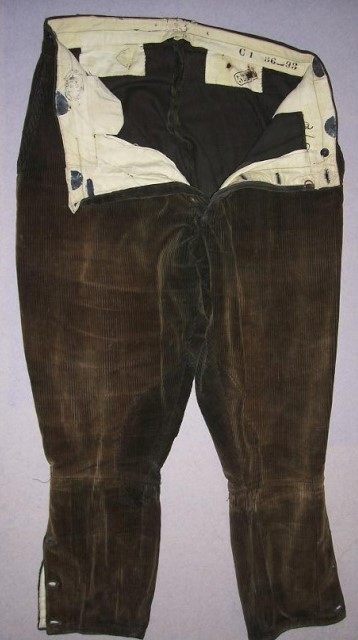
Examples of M1914 breeches in smooth velvet and corduroy in various colors and shades. See additional examples in the image at top of page.




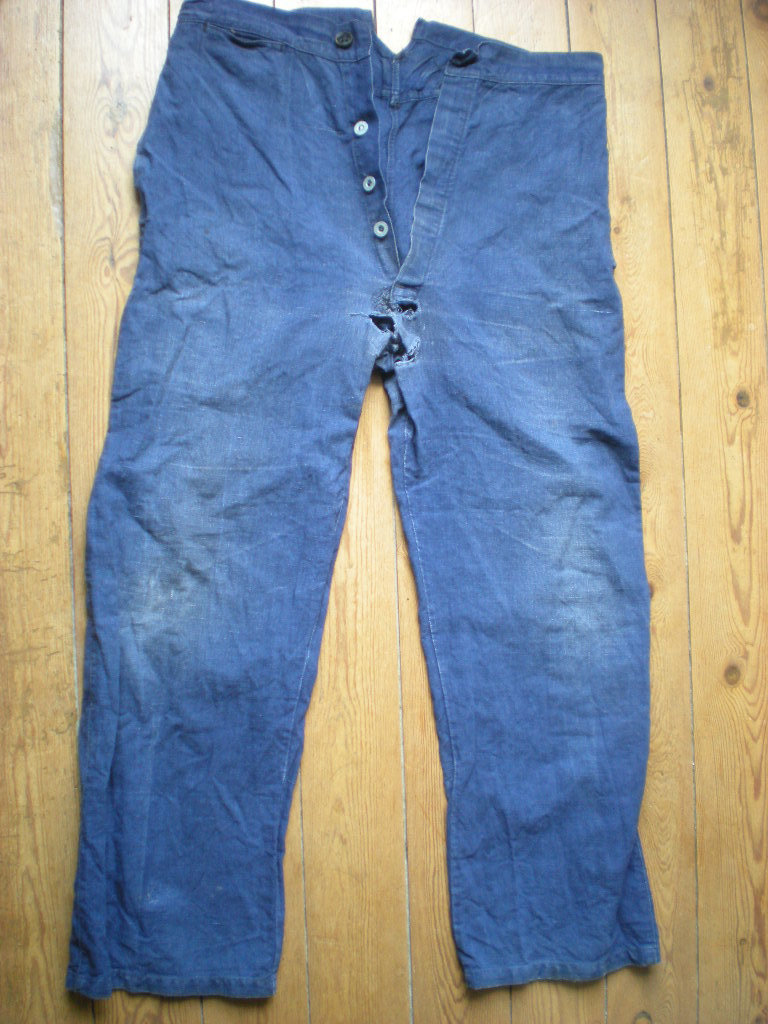
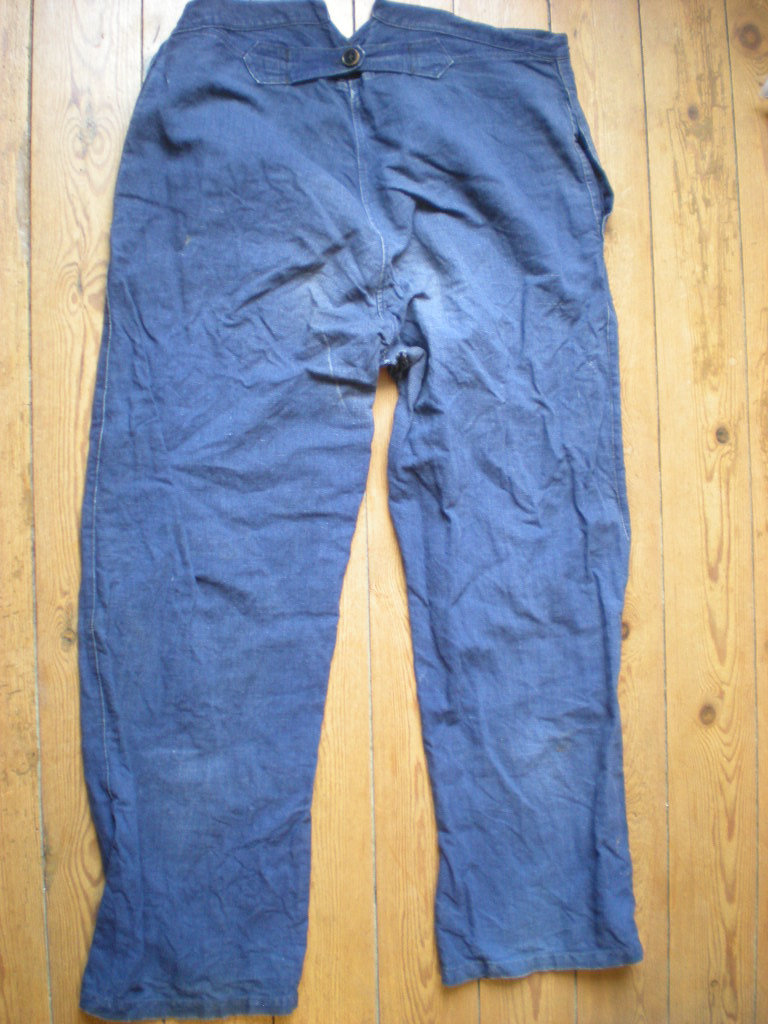
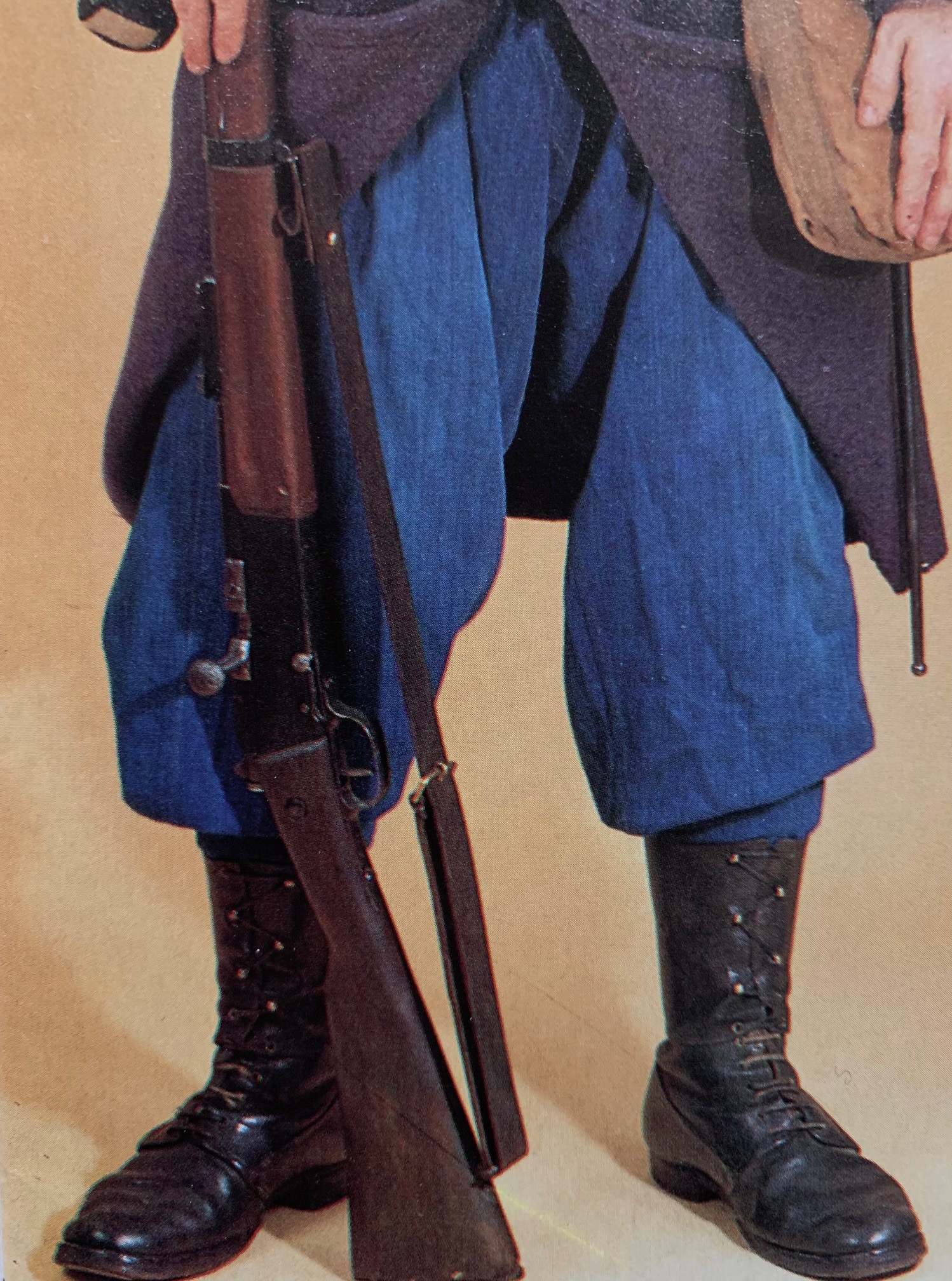
.jpg?dl=0)


